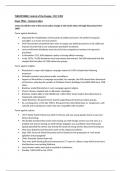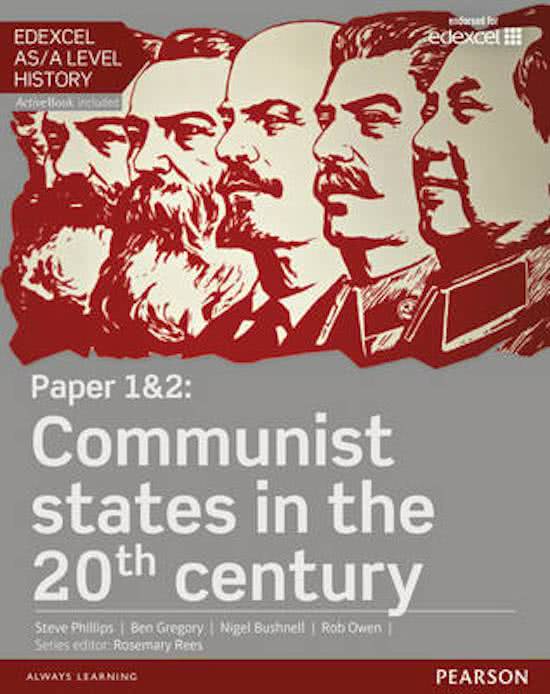THEMETHREE: Control of the People, 1917-1985
Essay Titles – Essays to plan
1.How far did the role of the secret police change in the Soviet Union through the period 1953-
1985?
Terror against dissidents:
Organised the rehabilitation of thousands of political prisoners. He preferred ‘popular
oversight’ as a means of social control.
1959: Khrushchev proclaimed there were no longer any political prisoners in the USSR and
instead, he preferred to use compulsory psychiatric treatment.
Lesser well known dissidents were forced to have compulsory treatment of repressive
psychiatry.
In November 1972, KGB adopted a policy of issuing official warnings.
In the 1970s, 70,000 dissidents were interviewed and warned. The KGB estimated that this
stopped the formation of 2,000 subversive groups.
Terror against religion:
Khrushchev’s major anti-religious campaign started in 1958. Included the following
measures:
Orthodox converts were placed under surveillance.
Aspects of Khrushchev’s campaign succeeded, for example, the KGB closed down thousands
of Churches, reducing the number of Orthodox Church buildings from 8000-5000 from 1958-
1964.
Brezhnev ended Khrushchev’s overt campaign against religion.
Church closures stopped and so did poster campaigns
Brezhnev seeked allies in the Middle East, whilst other Soviet leaders described Islam as
‘backwards and barbarian’
Under Brezhnev, the government started supporting anti-American Islamic groups.
As a consequence, in the late 1960’s, the government described Islam as: ‘progressive, anti-
colonial and revolutionary creed’ that was compatible with socialism.
Terror against culture:
1957: World Youth Festival was held in Moscow and saw young people dance to Jazz and
African drumming.
The double standard that soviet males having sex with foreign women was not seen as a
problem but women having sex with foreign delegates was a problem meant that party
squads patrolled the streets and shaved the heads of young women discovered having sex.
They were deported and forced to work on the virgin land scheme.
Sept 1965: Arrest of Andrei Sinyavsky and Yuli Daniel for the production of ‘anti-Soviet
agitation and propaganda’
1966: Sinyavsky-Daniel show trial.
They were both found guilty and sentenced to 5-7 years in a labour camp which led to fears
that Brezhnev was reviving Stalinism.
Lesser known artists were put in psychiatric institutions.
Possibly 7,000-8,000 in the 1970s.





